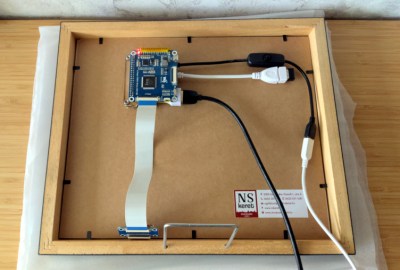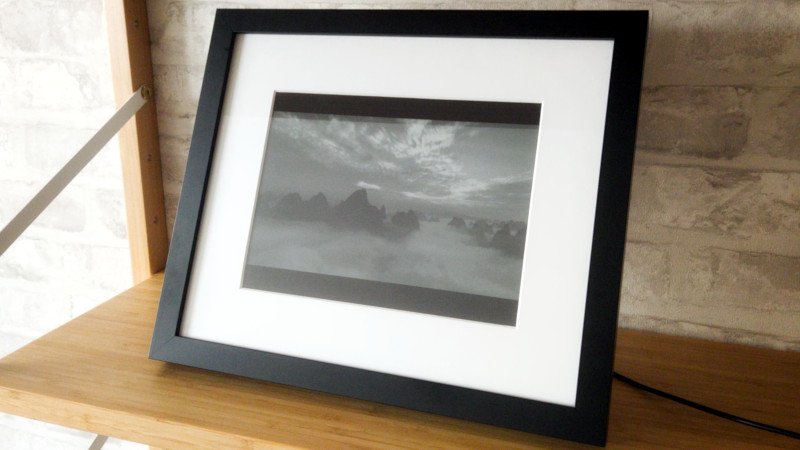Over the last couple of years we’ve seen several iterations of the “slow movie player” concept, where a film is broken up into individual frames which are displayed on an e-paper display for a few minutes at a time. This turns your favorite movie into a constantly changing piece of long-term art. Unfortunately, due to the relatively high cost of e-paper panels, most of the examples we’ve seen have only been a few inches across.
Of course, technology tends to get cheaper with time, which has allowed [szantaii] to put together this beautiful 10.3-inch version. With a 1872 × 1404 Waveshare panel capable of displaying 16 shades of gray and a Raspberry Pi Zero 2 W installed in a commercially purchased frame, the final product looks very professional. It certainly wouldn’t look out of place in a well-appointed living room.
 It’s not just a large display that sets this project apart. [szantaii] has done a phenomenal job documenting both the hardware and software of this project, which includes the “Slow Movie Player service” Python software he’s written. Even if you aren’t using an identical hardware setup, his MIT-licensed code will absolutely get you going in the right direction.
It’s not just a large display that sets this project apart. [szantaii] has done a phenomenal job documenting both the hardware and software of this project, which includes the “Slow Movie Player service” Python software he’s written. Even if you aren’t using an identical hardware setup, his MIT-licensed code will absolutely get you going in the right direction.
We especially liked the several example configurations provided, as well as the explanation of how ImageMagick’s various grayscale conversion options impact the appearance of the final image.
All in all, this is not only a beautiful and well implemented version of the slow movie player concept — but it’s also the kind of project that helps elevate the entire community thanks to its transparency. We wouldn’t be surprised to see this latest iteration inspire more folks to pick up an e-paper panel and build one of their own. Could 2023 be the year of the slow movie player? We certainly hope so.
















What am I missing? Why a gray scale e-paper display when the device is mains powered to run the Pi? Why not a larger, higher resolution 4K LCD that’s more visible, in grey scale, if that’s your artistic jam? You can get 19″ 4K monitors for $100. And, as a free bonus, you can view normal speed 4K movies. Clearly I’m missing the “essence” of this.
You literally used the word art in your own reply and don’t see the irony.
Art is in the eye of the beholder. For me the artistry of this technique falls into …meh. So, no … not ironic.
Yes, yes you are.
A large LCD with a backlit color screen is an utterly different look to a small low-resolution grayscale e-ink screen. At least in my mind’s eye, that change would move this from “what a neat representation of your love of this film” to “why do you have a movie paused on that TV?”
Beyond the “it’s art” aspect, it’s not backlit and draws a fraction of the power of even a small LCD. You could replace the backlight with perhaps a fogged mirror to use ambient light but that’s really a different look as well.
Maybe make a really tiny version with an LCD out of a camcorder viewfinder, but then I’d want it playing full motion…
You can’t simulate eink’s look by a LCD, at least not yet. Even those Sharp’s nonbacklit superreflective LCDs look *massively* different and inferior. They are different like night and day.
Perhaps a time lapse video of the output would be useful…
The original project has some time lapse video. Basically, the time lapse looks like a black and white movie, but the real world moves fast.
https://medium.com/s/story/very-slow-movie-player-499f76c48b62
200 USD for the display alone? Yikes.